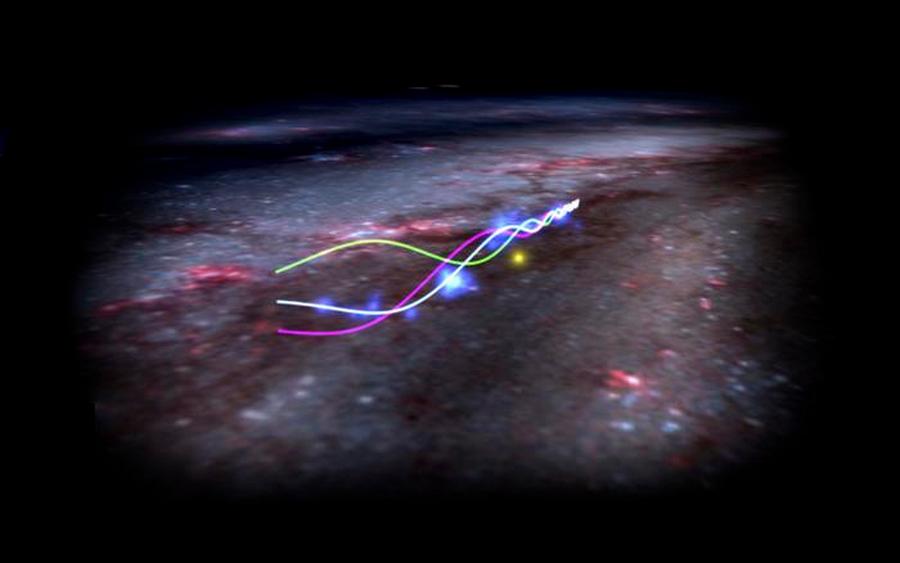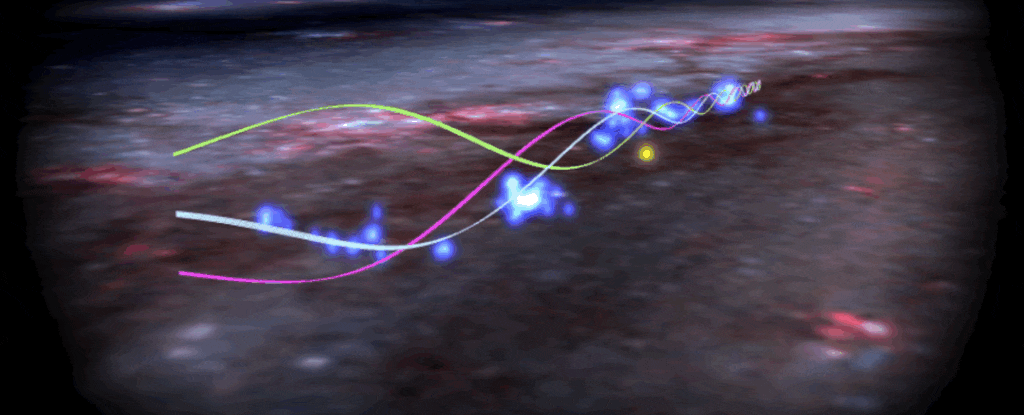Contemplating the sky above us, it may seem that the stars are fixed and static. But this is only our perception within a short time interval, because everything in the universe is in constant chaotic Brownian motion. Not all of these dynamic processes can be easily noticed. Just a few years ago, scientists discovered a huge wave-shaped structure about 9,000 light-years long, rotating along the spiral arm of the Milky Way, only 500 light-years away from our Solar System.

This structure is called the Radcliffe Wave. Its discovery is recognized as outstanding. But many of its properties remain unknown. However, a group of scientists led by astrophysicist Ralf Konietzka from Harvard University has found that, like many objects in the Milky Way, the Radcliffe Wave is in active motion. This is not just an orbital motion around the galactic center. According to Konietzka, using the motion of young stars born in gas clouds along the Radcliffe Wave, it is possible to track the movement of their native gas and show that the wave is actually oscillating.
Recent years have brought significant progress in understanding the three-dimensional properties of the Milky Way thanks to the Gaia spacecraft. This spacecraft carefully maps the galaxy using parallax to accurately measure the position of stars in three dimensions, as well as their own motion and velocity. Now we have the most accurate map of the Milky Way, which includes the position of the stars, the direction of their movement and velocity. Scientists used this data to discover the Radcliffe Wave in 2018 and published a 3D map of the structure in 2020.

Initially, astronomers did not have enough data to study the structure in detail, but additional Gaia data provided key information. The researchers determined the position and movements of young stars in the star-forming material of the Radcliffe Wave.
Extrapolating this information, they found that the structure really has an undulating shape, similar to a huge space snake moving along the Milky Way. The team’s calculations indicate the influence of gravity from ordinary matter in the galaxy on this movement.
However, many questions remain. Why did this wave arise? How does it move? Is this structure typical for the entire galaxy, or only for individual regions? Theories vary, from supernova explosions to gravitational interactions with satellite galaxies and collisions with large galaxies. Future research will reveal more deeply the nature of these wave-shaped structures and their interactions.
Earlier we reported that the stars on the outskirts of the Milky Way were moving too slowly.
According to sciencealert.com
Follow us on Twitter to get the most interesting space news in time
https://twitter.comne/ust_magazine


